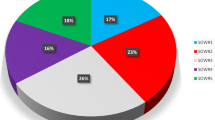Abstract
In this article, one of Iran’s southwest oil fields that produces 3200 barrels per day (bbl/d) of wastewater from oil and gas processing was investigated. Experimental analysis of oil reservoir water and desalting wastewater disposal of crude oil desalting unit was performed. First, water was treated with a reverse osmosis membrane. As a result, the purified water, with lower total dissolved solids (TDS) and pH, was a suitable candidate for injection into the adjacent wells of the crude oil desalting unit. The effectiveness and compatibility of this wastewater to the formation water of the oil field wells were simulated. Finally, we studied and identified the formation, the amount, and the type of mineral scale deposits. These are the most important problems during water injection into the wells. The analysis shows that the refined water from the reverse osmosis (RO) process was a suitable and low-cost economical option for injection in onshore and offshore fields, due to the low amount of salts, the concentration of susceptible ions in scaling formation, and the appropriate pH. This oil field, which is in the second half of life, requires enhanced oil recovery methods (EOR) for the maintenance of pressure and an increase in oil recovery.

















Similar content being viewed by others
References
Amiri M, Moghadasi J, Jamialahmadi M (2013) Prediction of Iron Carbonate Scale Formation in Iranian Oilfields at Different Mixing Ratio of Injection Water with Formation Water Energy Sources 35:1256-1265. https://doi.org/10.1080/15567036.2010.514596
Amiri M, Moghadasi J, Jamialahmadi M, Shahri MP (2013) The study of calcium sulfate scale formation during water injection in Iranian oil fields at different pressures. Energy Sources 35:648–658. https://doi.org/10.1080/15567036.2010.509092
Amjad Z (1988) Calcium sulfate dihydrate (gypsum) scale formation on heat exchanger surfaces: the influence of scale inhibitors. J Colloid Interface Sci 123:523–536
Annual book of American Standard Test Method (1992)
Bellarby J (2009) Well completion design vol 56. Elsevier
Bello O (2017) Calcium carbonate scale deposition kinetics on stainless steel surfaces. University of Leeds
Bijani M, Behbahanib RM, Moghadasic J (2017) Predicting scale formation in wastewater disposal well of Rag-e-Safid desalting unit. No dwt 65:117–124 https://doi.org/10.5004/dwt.2017.20172.
Binmerdhah AB (2007) The study of scale formation in oil reservoir during water injection at high-barium and high-salinity formation water. MSc thesis Universiti Teknologi Malaysia
BinMerdhah AB, Yassin AAM, Muherei MA (2010) Laboratory and prediction of barium sulfate scaling at high-barium formation water. J Pet Sci Eng 70:79–88
Ferguson RJ (2011) Mineral scale prediction and control at extreme TDS. In: International Water Conference. ESWP Orlando, FL, USA, p 77
García AV, Thomsen K, Stenby EH (2005) Prediction of mineral scale formation in geothermal and oilfield operations using the extended UNIQUAC model Geothermics 34:61–97. https://doi.org/10.1016/j.geothermics.2004.11.002
Haarberg T, Selm I, Granbakken DB, Ostvold T, Read P, Schmidt T (1992) Scale formation in reservoir and production equipment during oil recovery: an equilibrium model. SPE Prod Eng 7:75–84
He S, Kan A, Tomson M (1997) Oddo J. A new interactive software for scale prediction, control, and management. In: SPE Annual Technical Conference and Exhibition. Society of Petroleum Engineers,
Kalantariasl A, Zeinijahromi A, Bedrikovetsky P (2014) Axi-symmetric two-phase suspension-colloidal flow in porous media during water injection. Ind Eng Chem Res 53:15763–15775
Kamalipour M, Dehghani SAM, Naseri A, Abbasi S (2017) Modeling of gypsum precipitation in homogeneous and heterogeneous gas reservoirs.JNGSE46:738–749. https://doi.org/10.1016/j.jngse.2017.08.001
Khamehchi E, Kaldozakh H, Arman S, Alizadeh A (2017) An experimental investigation of magnetized water effect on formation damage. J Pet Sci Technol 7:65–76
Kumar S, Naiya TK, Kumar T (2018) Developments in oilfield scale handling towards green technology—a review J Pet Sci Eng
Li H (2013) Produced water quality characterization and prediction for Wattenberg field. Colorado State University
Mackay E (2003) Modeling of in-situ scale deposition: the impact of reservoir and well geometries and kinetic reaction rates. SPEPF 18(1):45–56. SPE-81830-PA. https://doi.org/10.2118/81830-PA
Mady MF, Kelland MA (2017) Study on various readily available proteins as new green scale inhibitors for oilfield scale control. Energy Fuel 31:5940–5947
Moghadasi J, Jamialahmadi M, Müller-Steinhagen H, Sharif A (2004) Formation damage due to scale formation in porous media resulting from water injection. In: SPE international symposium and exhibition on formation damage control. Society of Petroleum Engineers,
Moghadasi J, Sharif A, Müuller-Steinhagen H, Jamialahmadi M (2006) Prediction of scale formation problems in oil reservoirs and production equipment due to injection of incompatible waters. Dev Chem Eng Miner Process 14:545–566
Oddo J, Tomson M (1994) Why scale forms in the oil field and methods to predict it. SPE 9:47–54. https://doi.org/10.2118/21710-PA
Olajire AA (2015) A review of oilfield scale management technology for oil and gas production. J Pet Sci Eng 135:723–737
Piemonte V, Prisciandaro M, Mascis L, Di Paola L, Barba D (2015) Reverse osmosis membranes for treatment of produced water: a process analysis. Desalin Water Treat 55:565–574
Rocha A, Frydman M, Da Fontoura S, Rosario F, Bezerra M (2001) Numerical modeling of salt precipitation during produced water reinjection. In: International Symposium on Oilfield Scale. Society of Petroleum Engineers,
Santos SM (1994) Treatment of produced water from oil and gas wells using crossflow ultrafiltration membranes. Rice University
Separations DL (2004) FILMTEC reverses osmosis technical manual
Shabani A, Kalantariasl A, Parvazdavani M, Abbasi S (2019) Geochemical and hydrodynamic modeling of permeability impairment due to composite scale formation in porous media. J Pet Sci Eng 176:1071–1081
Sheikholeslami R (2005) Scaling potential index (SPI) for CaCO3 based on Gibbs free energies. AICHE J 51:1782–1789
Sheng J (2010) Modern chemical enhanced oil recovery: theory and practice. Gulf Professional Publishing
Stiff HA Jr, Davis LE (1952) A method for predicting the tendency of oil field waters to deposit calcium carbonate. J Pet Technol 4:213–216
Vaz A, Maffra D, Carageorgos T, Bedrikovetsky P (2016) Characterisation of formation damage during reactive flows in porous media. JNGE 34:1422–1433. https://doi.org/10.1016/j.jngse.2016.08.016
Vetter O, Kandarpa V, Harouaka A (1982) Prediction of scale problems due to injection of incompatible waters. J Pet Technol 34:273–284
Wang W, Wei W, Ferrier N, Arismendi N (2018) Scale formation and inhibition study for water injection wells. In: SPE International Oilfield Scale Conference and Exhibition. Society of Petroleum Engineers,
Williams H, Herrmann T, Jordan M, McCallum C (2016) The impact of thermodynamic hydrate inhibitors (MEG and Methanol) on scale dissolver performance. In: SPE International Oilfield Scale Conference And Exhibition. Society of Petroleum Engineers,
Yeboah Y, Somuah S, Saeed M (1993) A new and reliable model for predicting oilfield scale formation. In: SPE International Symposium On Oilfield Chemistry. Society of Petroleum Engineers,
Yuan MD, Todd A (1989) Prediction of sulfate scaling tendency in oilfield operations. In: SPE International Symposium on Oilfield Chemistry. Society of Petroleum Engineers,
Yuan MD. Todd AC (1991). Prediction of Sulfate Scaling Tendency in Oilfield Operations (includes associated papers 23469 and 23470 ). SPE Production Engineering, 6(01):63–72
Zhang P, Zhang Z, Liu Y, Kan AT, Tomson MB (2019) Investigation of the impact of ferrous species on the performance of common oilfield scale inhibitors for mineral scale control. J Pet Sci Eng 172:288–296
Author information
Authors and Affiliations
Corresponding author
Additional information
Responsible editor: Philippe Garrigues
Publisher’s note
Springer Nature remains neutral with regard to jurisdictional claims in published maps and institutional affiliations.
Rights and permissions
About this article
Cite this article
Bijani, M., Khamehchi, E. Optimization and treatment of wastewater of crude oil desalting unit and prediction of scale formation. Environ Sci Pollut Res 26, 25621–25640 (2019). https://doi.org/10.1007/s11356-019-05632-x
Received:
Accepted:
Published:
Issue Date:
DOI: https://doi.org/10.1007/s11356-019-05632-x




